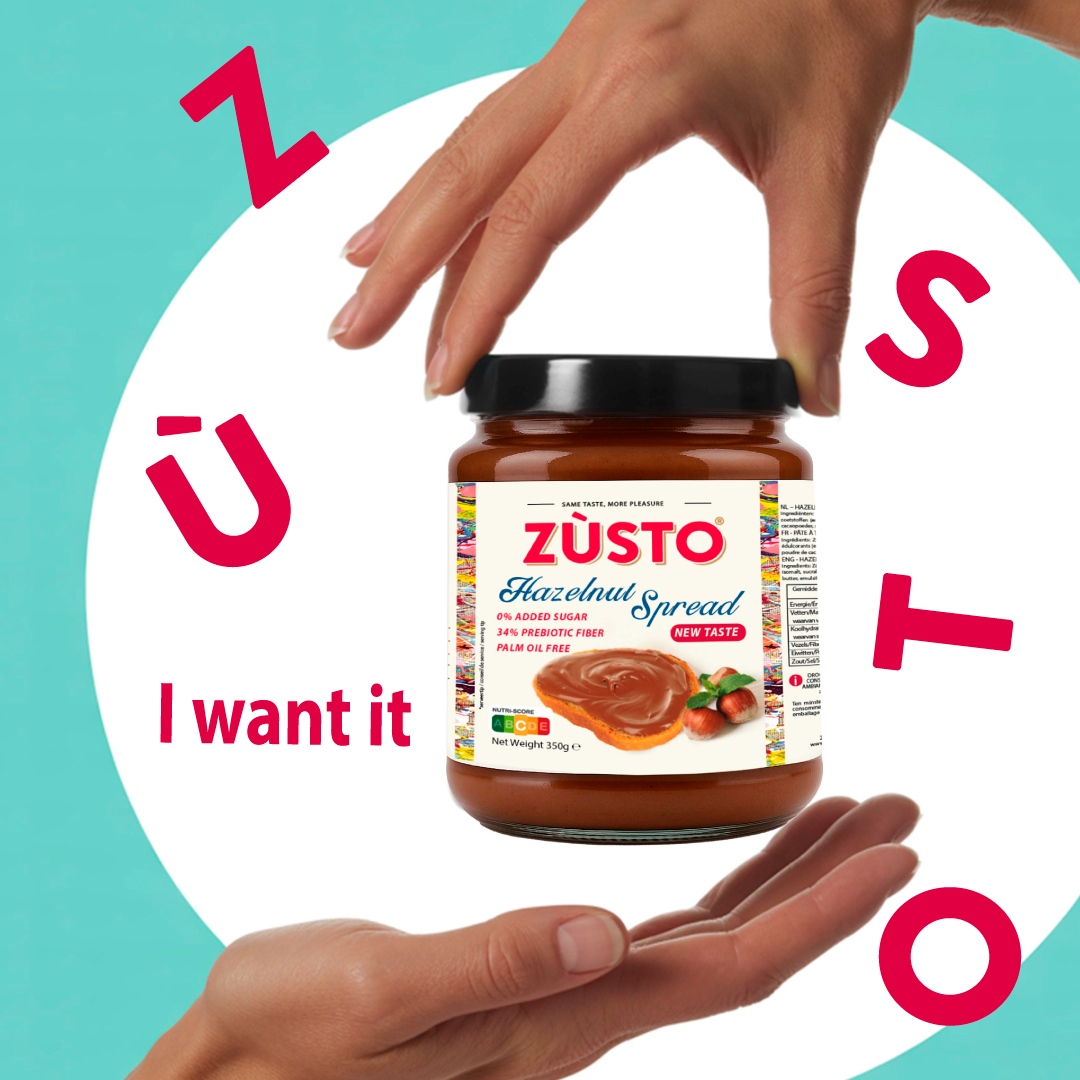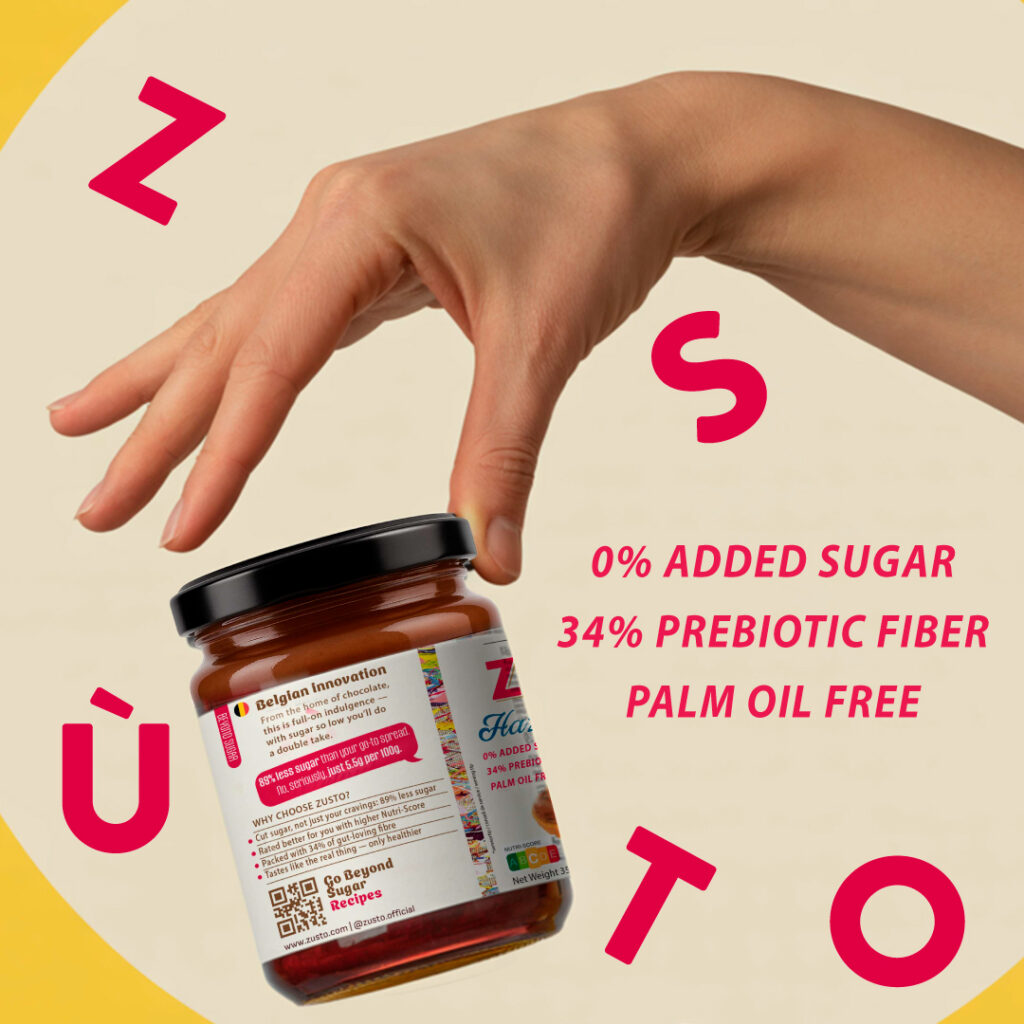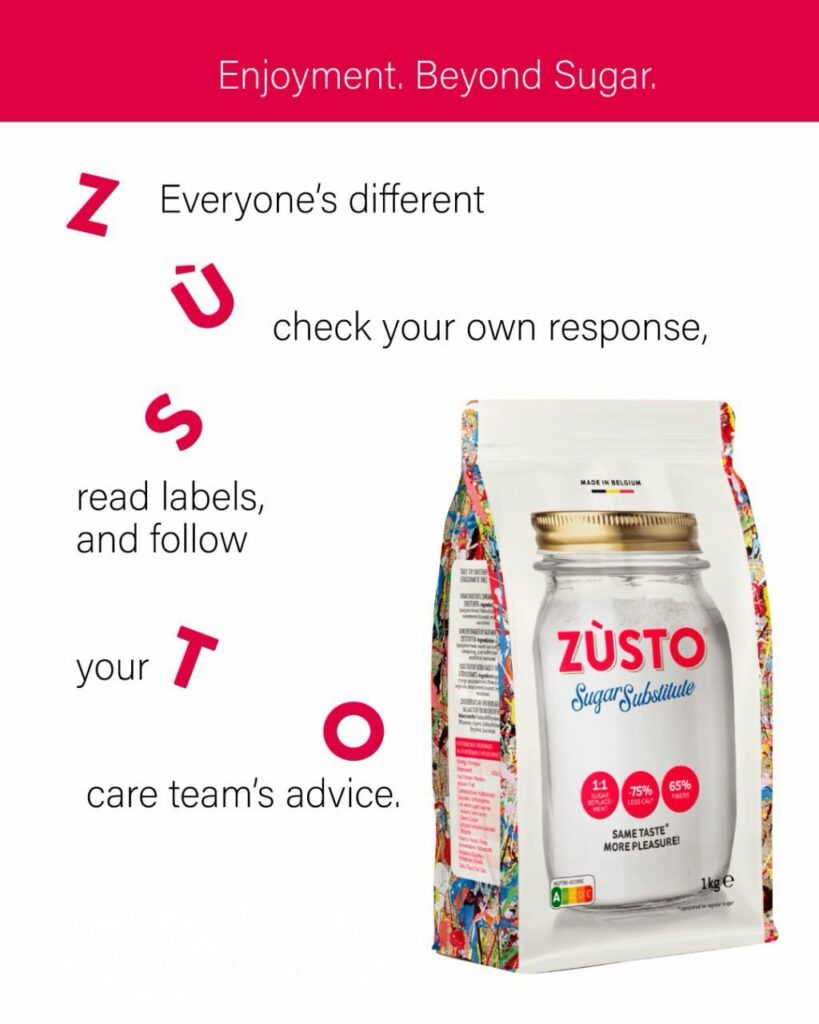- info@zusto.com
- Free shipment from €50 (Only in Belgium)
- Secure payment
- 100% happiness guarantee

How to Read Sweetener Labels: Fiber Types, GI Claims, and Serving Reality
Why sweetener labels feel confusing
Sweeteners promise everything—“natural,” “keto,” “low‑GI,” “no added sugar,” “prebiotic”—yet the nutrition panel often tells a different story. The trick is knowing which parts of the label drive your real‑world experience: appetite control, energy stability, and how a product behaves in your kitchen. This guide breaks down the essentials—fiber types, GI claims, and serving size realities—so you can shop faster, avoid marketing traps, and pick a sweetener that actually fits your goals.
Step 1: Start with the ingredient list (not the front of the pack)
- First three ingredients matter most: They make up the bulk of the product. If “sugar,” “glucose syrup,” “fructose,” or “maltodextrin” appear here, expect faster blood sugar impact.
- Learn the common aliases: Sucrose, dextrose, invert sugar, rice syrup, and agave are still sugars. “Coconut sugar” and “date syrup” are sugars too, just with a different image.
- Watch for “filler” carbs: Maltodextrin can raise glucose even if the sweet taste seems mild. It hides in some “zero sugar” or “natural” blends as a bulking agent.
- Favor fiber‑forward foundations: When fibers like soluble corn fiber (resistant maltodextrin), inulin, or chicory root fiber appear early, you’re more likely looking at a low‑GI design.
Step 2: Fiber types decoded—prebiotic vs “padding”
Not all fibers act the same. Some meaningfully support gut health and a gentler glycemic profile; others mostly add bulk.
- Inulin and chicory root fiber
- What it is: Fructans with prebiotic properties that feed beneficial microbes.
- Pros: Supports SCFA production; can help with fullness.
- Considerations: Introduce gradually—some people notice gas or bloating at higher doses.
- Oligofructose (FOS)
- What it is: A shorter-chain fructan; slightly sweeter than inulin.
- Pros: Prebiotic; can complement inulin for a rounder sweetness.
- Considerations: Similar tolerance notes—start low, go slow.
- Soluble corn fiber (resistant maltodextrin)
- What it is: A resistant form of maltodextrin that behaves like fiber.
- Pros: Generally well tolerated; low glycemic impact; neutral taste.
- Considerations: Quality can vary; look for reputable brands.
- Polydextrose
- What it is: A synthetic fiber used for bulk and reduced calories.
- Pros: Very low calorie; helps texture in baking.
- Considerations: Excess may cause GI discomfort in some.
- Isomaltooligosaccharides (IMO)
- What it is: Fiber‑like carbs with debated digestibility.
- Pros: Adds body and mild sweetness.
- Considerations: Some forms may raise blood glucose more than labels suggest. Treat claims cautiously and test your own response if you monitor glucose.
- Resistant starches (e.g., tapioca RS4, potato)
- What it is: Starches modified or cooked/cooled to resist digestion.
- Pros: Good for gut health; contributes to structure in baking.
- Considerations: Not very sweet—usually part of a blend.
Bottom line on fiber: Choose sweeteners whose primary bulking agent is a well‑characterized fiber (inulin/chicory, soluble corn fiber, or resistant starch). Introduce gradually and hydrate to support comfort.
Step 3: Know your sweetener category
- Bulk sweeteners (fiber blends, allulose, tagatose): Provide body, often 1:1 swap potential, and can be gentler on glucose. Fibers add functional benefits; allulose and tagatose have low calories but can affect GI comfort at higher doses.
- Sugar alcohols (erythritol, xylitol, maltitol, sorbitol): Vary widely in impact. Erythritol has near‑zero calories and very low GI; maltitol can spike glucose for some; others may cause GI discomfort.
- High‑intensity sweeteners (stevia, monk fruit, sucralose, aspartame): Very sweet in tiny amounts; usually blended with bulkers. Taste and aftertaste depend on the carrier.
Step 4: GI claims—what they mean, what they don’t
- GI basics: The glycemic index measures how fast a set portion of a food raises blood sugar compared with a reference (glucose or white bread). Low GI is typically ≤55.
- Whole formula, not just one ingredient: A product’s GI depends on the full blend. A low‑GI ingredient doesn’t guarantee a low‑GI product.
- Certified vs self‑reported: Prefer GI values from recognized testing protocols. Be wary of vague “low‑GI” badges without data or references.
- Portion context matters: Glycemic load (GL) factors in serving size. Even a low‑GI sweetener can become a high‑GL hit if you use a lot of it.
- Mixed meals change everything: Fats, protein, and fiber lower the glycemic impact of a meal. Compare like‑for‑like (e.g., sweetener in coffee vs in frosting).
Step 5: Serving size reality—watch the teaspoon games
- Tiny servings, big impressions: Labels can list “2 teaspoons” or “4 g” as a serving to make sugars and calories look low. Ask: “How much will I actually use in coffee or baking?”
- Count by grams, not just spoons: Density varies. A “teaspoon” of one brand may weigh more than another.
- Compare per 100 g: A quick way to normalize data across products for calories, carbs, fiber, and polyols.
Step 6: Net carbs and sugar alcohol math—don’t oversimplify
- Fiber subtraction: Many countries allow subtracting fiber from total carbs to estimate net carbs. That makes sense metabolically, but only if the fiber is truly non‑digestible.
- Sugar alcohol differences:
- Erythritol: ~0 kcal/g; minimal impact on glucose and insulin.
- Xylitol: Partially absorbed; some impact; watch portions (and pet safety—xylitol is toxic to dogs).
- Maltitol: Common in “sugar‑free” treats but often raises glucose; can cause GI distress.
- Your mileage may vary: If you track glucose, test your response to new blends. Labels are averages, not guarantees.
Step 7: Claims to trust vs treat carefully
- “No added sugar”: Good—but the product may still be high in digestible carbs from starches or fruit concentrates. Check total carbs and fiber.
- “Keto” or “diabetic‑friendly”: Marketing terms, not regulated definitions. Validate with the panel: fiber grams, polyol types, and realistic portions.
- “1:1 sugar replacement”: Clarify whether that means volume or weight. Texture and browning can vary by recipe; look for brands that show performance in both hot and cold applications.
- “Tooth‑friendly”: Non‑cariogenic claims are meaningful if backed by standardized testing; otherwise consider it a nice‑to‑have.

A 10‑second scan that works in any aisle
- Check the first three ingredients: Aim for fiber‑forward, avoid hidden sugars.
- Glance at calories per 100 g: Lower is usually better for weight goals.
- Look at total carbs, fiber, and polyols: High fiber with low digestible carbs is a good sign.
- Consider your real serving: Coffee? Baking? Adjust expectations accordingly.
- Verify claims: GI numbers, 1:1 promises, and “keto” badges should align with the panel.
Build your personal tolerance profile
- Start low, go slow: Increase portions over a week to let your gut adjust to prebiotic fibers.
- Hydrate: Fiber works best with fluids.
- Pair smart: Combine sweeteners with protein and additional fiber (yogurt, nuts, whole grains) to smooth energy.
- Track your response: If you use a CGM or glucose meter, test before and 1–2 hours after trying a new product or portion.
How to compare two sweeteners in under a minute
- The 5‑number snapshot:
- Calories per 100 g
- Total carbs per 100 g
- Fiber per 100 g (and type, if listed)
- Polyols per 100 g (and which ones)
- Verified GI (if available), or at least whether high‑GI fillers appear in the top ingredients
- Taste and performance notes:
- Clean sweetness vs aftertaste?
- Does it brown and hold moisture in baking?
- Does it dissolve easily in cold drinks?
- Real‑world portion: How much do you actually need for the taste you want?
Red flags that deserve a second look
- “Zero sugar” but maltodextrin in the top three ingredients
- Heavy reliance on maltitol without disclosure of polyol grams
- Vague “low‑GI” badges with no testing reference
- Unrealistic serving sizes (e.g., 2 g) that hide the true impact
- “Natural” halo marketing that distracts from a high‑sugar formula
Green flags worth seeking out
- Clear identification of fiber types (e.g., soluble corn fiber, inulin)
- Transparent breakdown of polyols with amounts
- Practical guidance on 1:1 use by weight and volume
- Performance claims for hot and cold uses (coffee, sauces, baking)
- Sensible serving sizes that reflect everyday reality
Frequently asked questions
Do “natural” sweeteners always have a lower GI?
No. “Natural” refers to origin, not metabolic impact. Honey, coconut sugar, and date syrup are still sugars. Check the panel, not the poetry.
Are all fibers prebiotic?
No. Many fibers add bulk or texture but don’t strongly feed beneficial microbes. Inulin/chicory and some resistant starches have stronger prebiotic evidence; IMO is mixed.
If a product is low GI, can I use as much as I want?
Portion still matters. Glycemic load rises with quantity. GI is about speed; GL is about total impact. Keep portions aligned with your goals.
Do sugar alcohols always have zero impact?
No. Erythritol is close to zero, but xylitol and especially maltitol can affect glucose. Labels should disclose polyol grams; your body tells the rest.
What if I care about teeth as well as glucose?
Look for products using non‑fermentable sweeteners and fibers. If “tooth‑friendly” claims are made, seek mention of standardized testing. Daily brushing and timing (sweetness after meals) matter too.

Choose clarity over claims
The best sweetener for you is the one whose label you can read at a glance and trust. Prioritize fiber‑forward blends with well‑characterized ingredients, realistic serving sizes, and claims that line up with the nutrition facts. Taste still matters—so does how it behaves in coffee and baking—but a smarter label is your shortcut to steady energy, better satiety, and fewer surprises.
Want help picking a low‑GI, fiber‑forward option that works in both drinks and desserts? Use the 10‑second scan and 5‑number snapshot above on your shortlist. Your sweet tooth—and your energy curve—will thank you.







